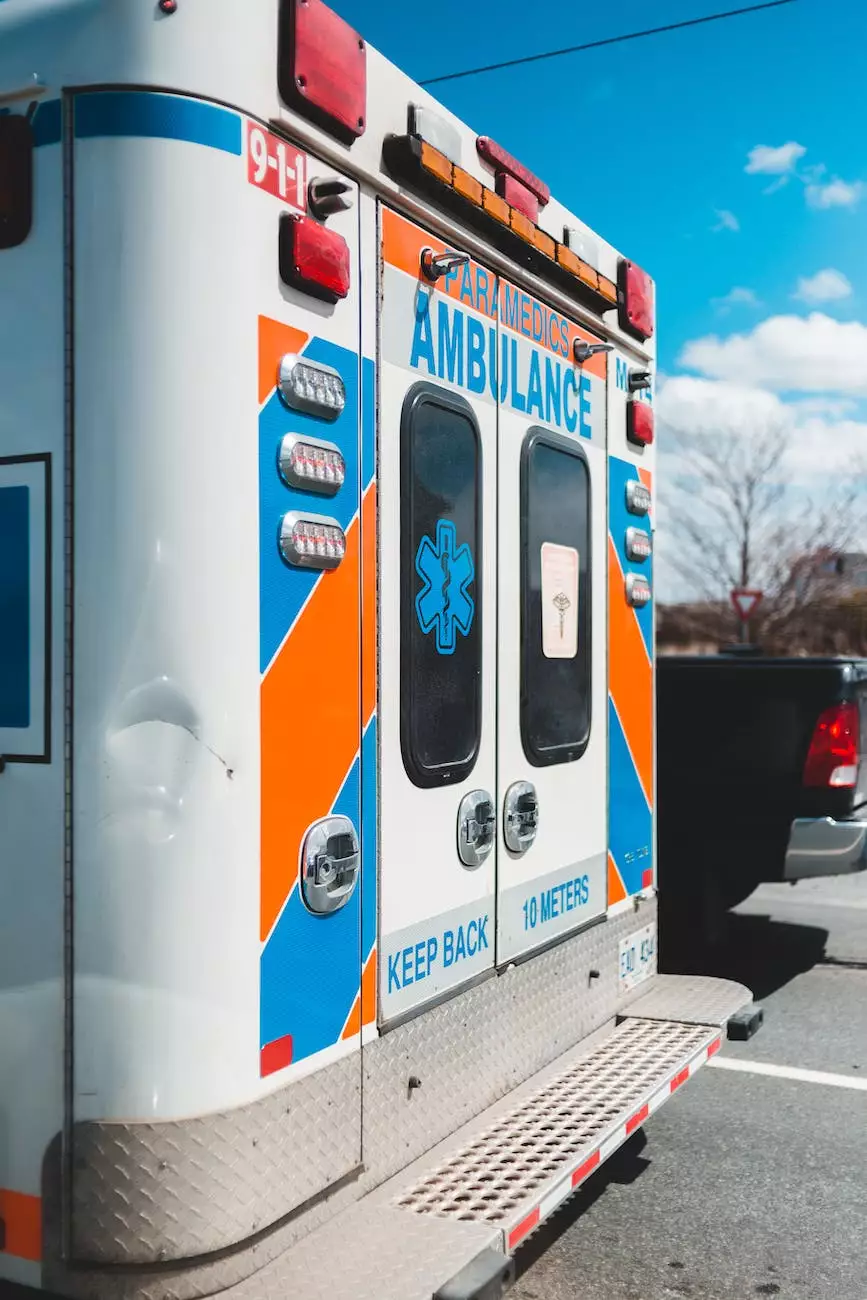Hip and Leg Injuries
Injuries
Introduction
Welcome to Pain Cream Advisors, your trusted source for comprehensive information on various health conditions and injuries. In this article, we will discuss hip and leg injuries, including their causes, symptoms, and treatment options.
Understanding Hip and Leg Injuries
Hip and leg injuries can occur due to various reasons, such as sports activities, accidents, falls, or underlying medical conditions. These injuries can range from mild strains to severe fractures, affecting the bones, muscles, joints, and ligaments in the hip and leg region. Effective management and timely treatment are crucial for a successful recovery.
Common Causes of Hip and Leg Injuries
There are several common causes of hip and leg injuries, including:
- Sports-related activities, such as running, jumping, or contact sports
- Accidents, such as car collisions or workplace incidents
- Falls from heights or slippery surfaces
- Overuse or repetitive stress on the hip and leg muscles
- Age-related wear and tear, leading to conditions like osteoarthritis
Symptoms and Diagnosis
The symptoms of hip and leg injuries may vary depending on the specific injury. Common symptoms include:
- Pain, swelling, and tenderness in the affected area
- Difficulty in moving the hip or leg
- Visible deformity or bruising
- Joint stiffness or instability
- Cracking or popping sounds during movement
Diagnosing hip and leg injuries typically involves a combination of physical examinations, imaging tests, and medical history review. Consultation with a medical professional is essential for an accurate diagnosis.
Treatment Options
The treatment for hip and leg injuries depends on the specific injury, its severity, and the individual's overall health. Common treatment options include:
Conservative Treatments
Mild to moderate hip and leg injuries can often be treated with conservative approaches, including:
- RICE therapy (Rest, Ice, Compression, Elevation)
- Physical therapy exercises to improve strength and flexibility
- Nonsteroidal anti-inflammatory drugs (NSAIDs) for pain and inflammation
- Using crutches or assistive devices for weight-bearing support
Medical Interventions
In more severe cases, medical interventions may be necessary, such as:
- Casting or splinting to immobilize the affected area
- Surgical repair for fractures or severe ligament tears
- Joint replacement surgery in cases of advanced arthritis
- Injection therapies, such as corticosteroids or PRP (Platelet-Rich Plasma) injections
Recovery and Rehabilitation
The recovery period for hip and leg injuries can vary depending on the severity and type of injury. It is important to follow a structured rehabilitation program to regain strength, mobility, and function. Physical therapy, exercises, and gradual return to normal activities play a significant role in the recovery process.
Prevention Tips for Hip and Leg Injuries
While not all injuries can be prevented, there are steps you can take to reduce the risk of hip and leg injuries:
- Wear appropriate protective gear during sports or high-risk activities
- Warm-up before exercising or participating in physical activities
- Maintain a healthy weight to reduce stress on joints
- Practice proper ergonomics and body mechanics
- Use caution and take necessary precautions when walking on slippery surfaces
Conclusion
In summary, hip and leg injuries can significantly impact one's mobility and quality of life. Understanding the causes, symptoms, and treatment options can help individuals make informed decisions about their healthcare. Pain Cream Advisors is committed to providing expert advice and support in managing and recovering from hip and leg injuries.
Consult with a healthcare professional for personalized guidance regarding your specific hip and leg injury. For more information on a wide range of health-related topics, please explore our website.



